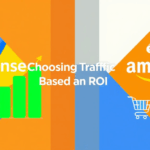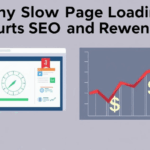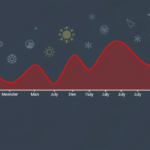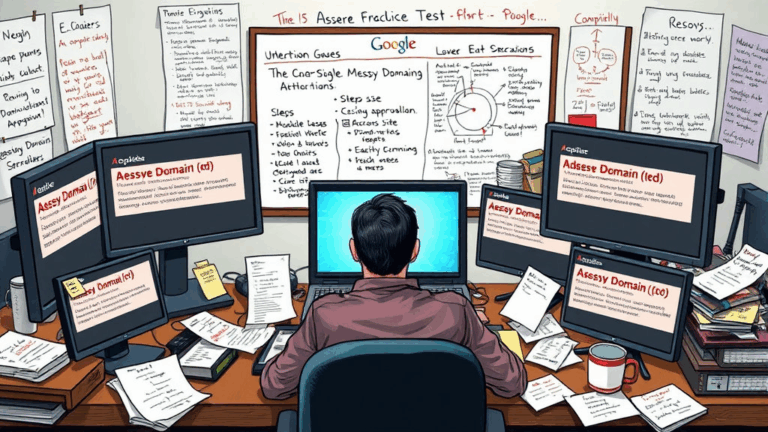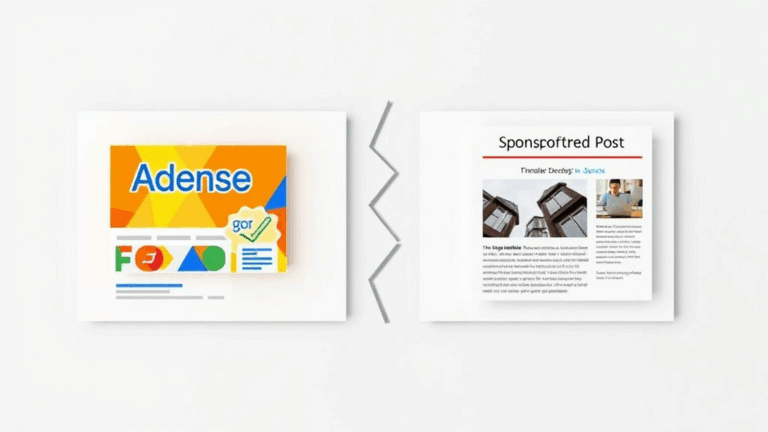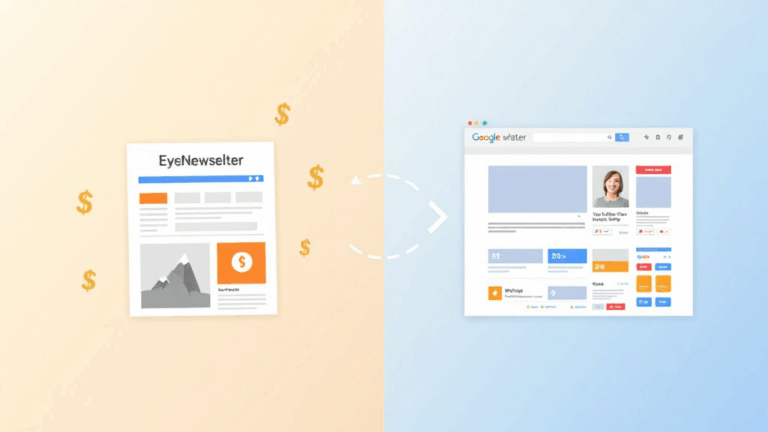Unstable AdSense Revenue and Bitcoin Payment Crossroads
AdSense Revenue Flatlining on Mobile — Again
There’s a specific kind of soul-deep dread when you load your AdSense dashboard after a decent weekend CPM… and it’s flatlined to basically nothing on Monday. Made worse by the fact that it’s only your mobile revenue doing this. Again. Desktop’s chillin’. Responsive ads are showing. But the numbers just vanish.
This happened to me in April. No recent layout change, no policy violations. AMP was disabled months ago. I spent half a day poking at layout shifts, CLS scores, viewport width changes. Nope. Turned out—after a log-crawling haze—that Googlebot had reindexed a transient serving bug that stripped the <head> section on half my mobile pages. Like, it literally wasn’t shipping the <script async src="https://pagead2.googlesyndication.com/pagead/js/adsbygoogle.js"> load. My own cache layer was serving a partial render. Because of a failed edge rewrite. Amazing.
“Mobile bounce rate stayed the same—people were still reading. But the AdSense script wasn’t initializing, so no fills. The crawl snapshot just stuck.”
The AdSense backend didn’t throw any helpful warnings. Just said “0 impressions, 0 views” like that was a technical truth and not a blind guess. Did a manual purge on my cache via a forced edge invalidation, forced re-crawls through Search Console, and two days later, the numbers started trickling back in. Undocumented issue? Kinda. But it won’t show up in the AdSense UI—it’s a ghost.
Mediaton Collisions in Network Layers
If you run multiple monetization partners through an ad server (e.g., Ad Manager or Prebid), AdSense will occasionally pretend like it doesn’t know it’s even in the auction. I had this nasty one where a hardcoded bidder response was sending “fallback creative” into the client pre-roll div. But AdSense’s fill logic quietly failed—no error, just a silent pass.
The kicker: AdSense still claimed impressions in the frontend logs. So on paper, it looked like it filled. But MDR (matched demand revenue) went nowhere. When I hooked it into Google Publisher Console (GPT), turns out there was a network collision where the parent iframe had already been claimed by another bidder IDed as top priority.
You have to set ‘collapseEmptyDivs’ properly and—more critically—not preload competitive creatives before AdSense initializes. The timing matters weirdly more than it should. You’d think timestamp ordering would fix this. Nope. Something in GPT’s bidding defer loop latches AdSense’s call too late if a non-Google bidder wins the autoplay block even temporarily. Total black box.
Bitcoin Payment as a Parallel Revenue Escape Valve
Here’s a left-field workaround: I ended up wiring a BTC payment option into one of my stripped-down WordPress installs after getting tired of AdSense dips. It started as a tip jar. But I realized fast that some readers—particularly from high-censorship countries—preferred crypto paywalls over my usual locked content.
Was it smooth? Not even close. Electrum wallets were easy to stand up, sure. But making them jive with return JWT tokens for user session unlocks was a mess. I had to duct-tape an in-memory Redis store that cross-verified payment detection with a 4-minute expiry window. Why? Because BTC confirmation time is too slow for web UX. And simulating confirmations instantly with 0-confirmation trust? Well, I’ve been burned there. Twice.
A Few Ridiculous Hang-ups I Hit:
- Out-of-sync blockchain node threw false negatives on confirmed payments
- One regional ISP blocked BTC update ports — user looked unpaid when he wasn’t
- Chrome extension (MetaMask) auto-injected conflicting JS in the payment success iframe
- Z-index CSS bug on a wallet QR modal that hid the timer beneath a fixed footer
I wouldn’t call this plan B. It’s like… plan F. But sometimes pennies per click just don’t cut it. Especially in the months you get three disapprovals and a UI bug drags for weeks. If nothing else, offering different paths gives readers agency without turning them off with silence.
When Auto Ads Suddenly Wreck Your Layout
I’ve had Google’s AdSense Auto Ads literally pull `
`s out of their containers and inject mid-post ads between JavaScript-rendered content blocks. This happens if you’re serving React components with hydration errors—Auto Ads sees the DOM structure as static and safe, then wedges ad markup mid-flow. The result? Floating ad blocks overlapping CTA buttons or page nav. It looks like you tried to trick the user, but you didn’t—you just had a hydration mismatch and Auto Ads thought it was a clean slate.
Inspecting the in-console DOM snapshots shows the injected ad iframe where a <section> tag used to be. But the hydration fix didn’t tell Google that. I started wrapping unstable front-end elements with custom data attributes and excluding them using data-ad-ignore="true". Not documented. Works sometimes.
The worst part is you can’t replicate this reliably in dev mode. It doesn’t always kick in if you’re running localhost or Vercel preview mode. It needed prod + a Googlebot hit + a rendering delay from a 3rd-party analytics script to cause the issue. Yeah.
Drops After “Invalid Traffic” Without Being Told Anything Useful
If you’ve ever had that vague “earnings at risk” message in your Policy Center, welcome to the club. I got one that said “Invalid traffic concerns”, no specifics. Revenue was cut maybe in half. All layouts were vanilla and policy-compliant. Audit logs showed nothing. Digging further, I noticed something wild: a sudden spike in second-page views with NO ad fills. Cross-ref’ed it with a tail of referral headers, and found some botnet pumping through semi-random User Agents with Layer 7 fingerprint cloaking. Basically: fake second clicks from obvious garbage IP nets.
Not a single violation notice. Just an earnings haircut and a vague warning. After blocking those referrers in NGINX and putting up a basic JavaScript challenge on certain routes, the curve stabilized. Guess what? Still no word from Google on the issue. AdSense operates on the assumption that you’ll self-diagnose invisible sabotage with no logs.
Session Token Expiry on AdSense Accounts While Debugging
Weird one, but important: if you’re flipping between accounts managing ads for multiple domains (like I do on client stuff), and you’re signed into more than one AdSense account in the same browser session, expect all sorts of UI bugs during debugging.
The AdSense dashboard will sometimes render the wrong site’s performance stats. But worse—when you’re editing ad units, the adsbygoogle tokens may cross-pollinate via shared cookies. I got a corrupt ad unit ID injected into the head on a Next.js site because a _gads token expired mid-flight. My Chrome dev tools said everything looked legit… but the ad frame served back a totally unrelated ad block. From a domain I wasn’t even debugging.
“I fixed it by nuking all Google-related cookies, pinning one account per Chrome profile, and setting my DNS manually to prevent GA tracking flaps.”
This likely won’t hit everyone, but if you’re making changes and getting inconsistent ad fills across staging environments—check whether you’re unknowingly crossing scopes. The logs won’t tell you. You’ll feel it in your DNS headers and your browser’s psychotic tab behavior.
AdSense Reporting Delays That Break Your Mental Math
Got into an AdSense spiral once trying to reconcile analytics with today’s earnings for a high-traffic tweet that brought a mini-spike. Thought I was owed more in RPM—in fact, I thought I’d finally optimized something correctly. But AdSense didn’t reflect it for 36 full hours. Not even partial impressions.
This is one of the weird delays that doesn’t get aired out much. The AdSense UI shows “last updated 1 hour ago”, but that doesn’t apply to real-time campaigns. Some fill paths—especially from AdX or indirect demand partners—don’t show up until after a full day sync. I’ve seen query logs where the line items reported no fill, while the actual iframe delivered fallback inventory. My guess is that those are queued and batch-attributed after model validation.
Either way, if you push a hotfix that increases CTR and don’t see earnings change? Give it time. If it’s still flat after two days, then yeah, probably not the fix you thought it was.
How Cloudflare’s Rocket Loader Once Silently Killed My AdSense
Cloudflare Rocket Loader is deceptive. It promises better paint scores and asynchronous script improvement. What it did: reordered my ad script rendering on all non-homepage routes. Badly. Specifically, it deferred adsbygoogle.js after a chunk of inline scripts that were running shortened markup for readability gets—with the result being a totally empty ad container by the time the browser reached the AdSense call. No error. Just no ad.
You won’t see this unless you’re logging native JS errors from within the iframe context (which is gross). Rocket Loader doesn’t officially say it mangles timing for inline script tags—but it does. At least it did in the version I had running late last year.
I bypassed it by adding data-cfasync="false" to every ad-related script, but it took me way too long to land there. StackOverflow was weirdly unhelpful. Folks flag Cloudflare often, but not this particular behavior. So if your page is fine, analytics works, but ads load like 2% of the time? Rocket Loader might be quietly trampling your scripts into a useless timeline.

